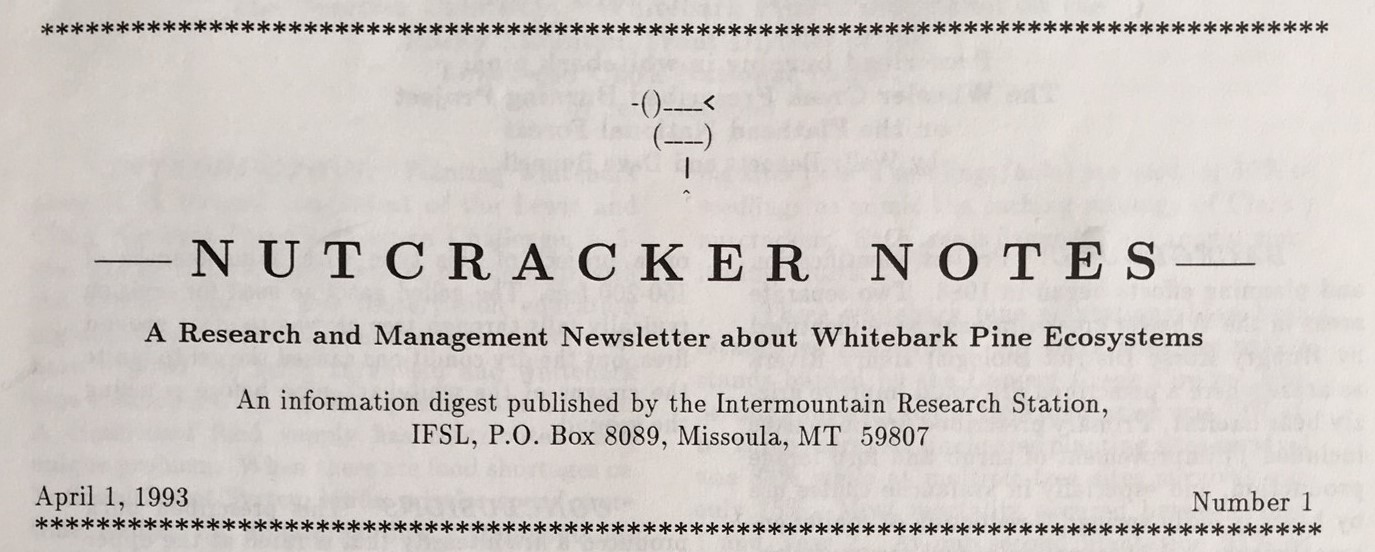
Way Back Whitebark- November 1993
Aerial Surveys of Whitebark Pine: Possible Tool for Broad Scale Landscape Analysis
by Beth Hodder
This article appeared in a November 1993 issue of Nutcracker Notes
The Glacier View Ranger District (GVRD) joined with Timber, Cooperative Forestry, and Pest Management (TCFPM) in a first-of-its-kind study to determine the feasibility of using aerial surveys for whitebark pine inventory at the landscape level. Tim McConnell, TCFPM, and Beth Hodder, GVRD, flew in a fixed wing aircraft for nine hours in two days, observing over 100,000 acres of potential whitebark pine in the North Fork of the Flathead.
During the aerial survey, Tim sketch mapped polygons representing broad condition classes of whitebark pine. Each polygon contained a code describing its condition class and the percentage of dead whitebark pine. Beth used binoculars to get a closer look at some areas, took photos, and discussed condition classes with Tim.
Using a fixed wing plane offered the opportunity to view vast portions of the district in a relatively short period of time and in a reasonably inexpensive manner (Ferry time for the plane, pilot per diem, and survey time amounted to about $1640).
Some follow up from the survey is taking place. Tim returned to the district office to check his sketch maps against the district’s orthophotos and aerial photos and to talk further about the usefulness of this survey. TCFPM also intends to digitize the polygons into GIS and make map overlays. Glacier View personnel plan to check this summer’s stand exams and ECODATA plots taken in whitebark pine stands against the flight polygons. Other areas may also be chosen for future ground-truthing, based on findings from the flight.
Although it is too early to determine the success of this type of survey as a tool for broad scale landscape analysis or other ecosystem management projects, district and TCFPM personnel feel the flight proved useful. For example, they found that changes in the whitebark pine ecosystem, or any other ecosystem, manifest themselves when observed from the air; a broader but perhaps more holistic view presents itself when seen in a context much larger than on a stand-by-stand basis. Also, district personnel have a better idea of where to look for live whitebark pine for future cone collections. The flight maps show several large areas within easy access to roads where cones might be located. A more complete summary detailing the project and some initial observations and conclusions is available from B. Koss.

